
The year was 1689. The young Maratha king was standing in front of Aurangzeb, shackled, but without a trace of fear in his eyes. Chhatrapati Sambhaji, Son of Shivaji Maharaj was finally captured, thanks to his backstabbing relatives. Every day, Aurangzeb asked Sambhaji Raje one question: Get converted to Islam, and every day, the answer was no, with some insulting comments in return. His eyes were plucked out. After a couple of days, his tongue was removed as well. A few days later, he was skinned alive.
But this young King did not accept Islam (Religion of peace and mercy). After enduring the inhuman torture for 40 days, he was killed, diced into pieces and thrown into the river. People gather these pieces and performed the last rituals on their beloved king. After death, his younger brother was coronated when he was just 19 years old. Due to the relentless attacks of Mughals on Swarajya, he left Maharashtra for Gingee.

Everyone has heard about the so-called heroic retreat of British troops in Dunkirk under the codename – Operation Dynamo. But not many people are aware of Chhatrapati Raja Ram’s 1100 kilometers journey from Raigad to Gingee, which is nothing but the tale of extreme courage, sacrifice, and brilliant military tactics. A Maratha king- Without his kingdom. His opponent is the Sultaan of the largest contemporary kingdom on earth, ruling over 158 million subjects, an empire spread 4 million square kilometers.
Sultan attacked that Maratha King with all of his resources and the might of 600,000 strong men. King fled, took shelter in the southernmost stronghold in India, that is Gingee. Young King set his foot in Gingee, standing tall, like an unmovable lighthouse in the sea, as a beacon of hope to all the fighters of Maharashtra Dharma for eight years. And when he came back, it was the beginning of a legendary empire, we know today as Maratha empire.
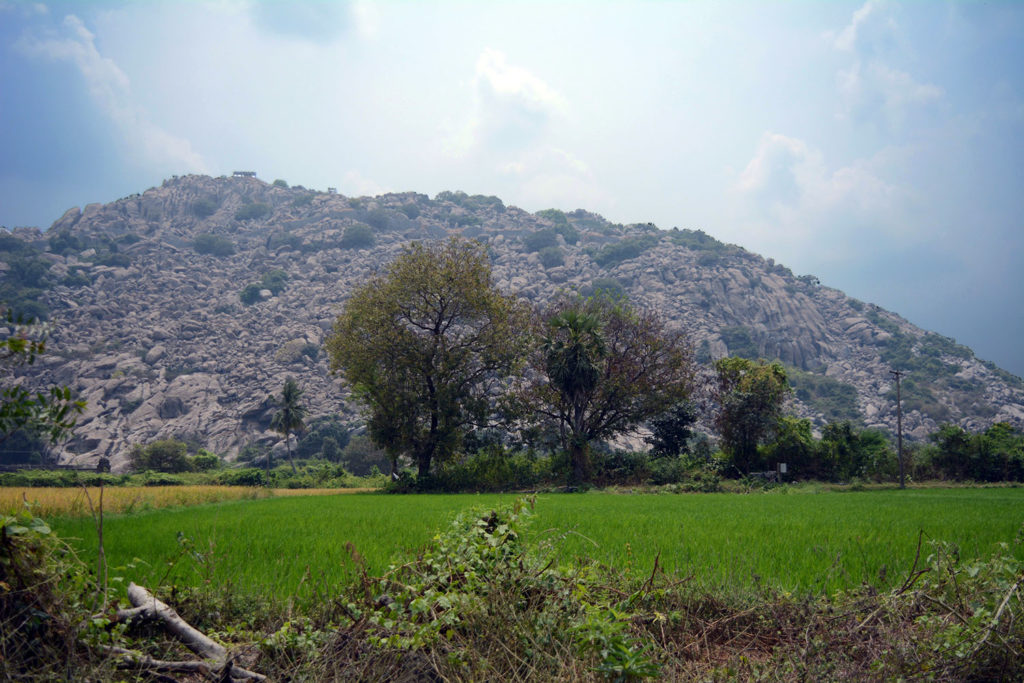
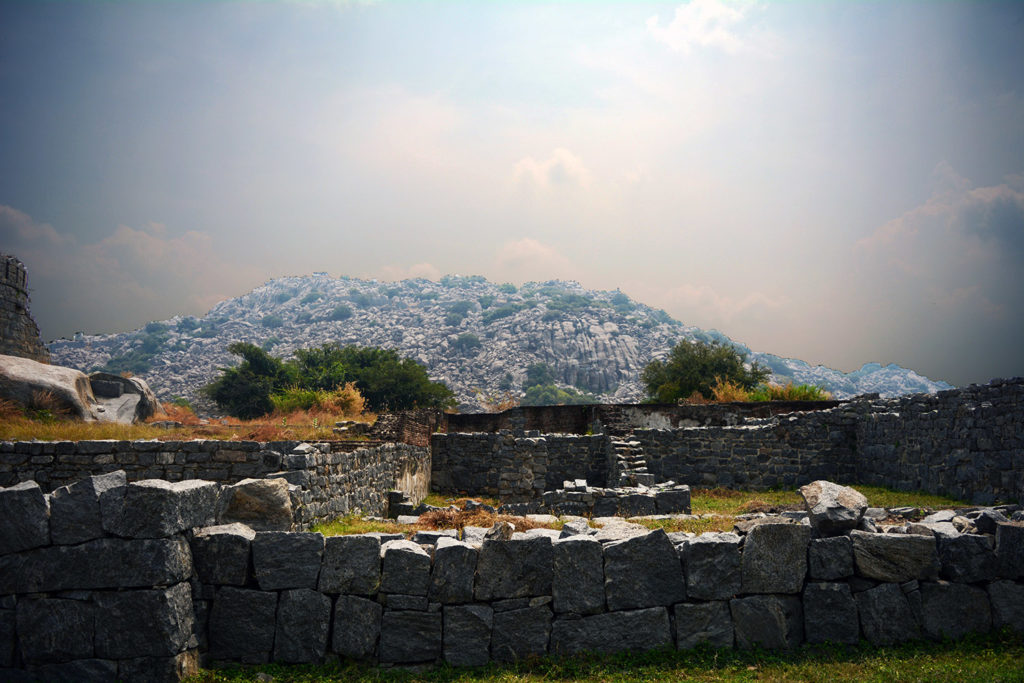
Gingee fort History:
Pre Maratha History of Gingee: History had called this fort by many names and numerous pronunciations. Gingee, Senji, Chingi, Chandi, Chyngy, Gynji, and Jinjee. It has quite an interesting origin story. in the 12th Century, a shepherd named Anand Konda went after his flock on the hillock, found a huge treasure buried. Using this wealth, he gathered the forces, established a Konar dynasty and eventually started building the fort in 1190. There was a goddess named Senjiamman on the hillock, much before this construction began and hence, the fort was named after her as Senji.
Fort became a part of Hoysala empire and then later, the part of The Vijaynagara Kingdom. Vijaynagara kingdom had three Major cities- Hampi, Madurai and the last one was this town, engulfed in the fort. After the battle of Talikot in 1565, resulting in the fall of the Vijaynagar Empire, Nayakas in Gingee become self rulers of the forts. They made many modifications to the fort buildings after the Vijaynagar dynasty.
Father Nicholas Piments was one of the early Jesuit travelers in Asia stayed in Gingee in year 1597 writes: We went to Gingee- the greatest city in India and bigger than any in Portugal Lisbon excepted. The Nayakas appointed our lodging in the tower, but heat forced us to the Grove…”
Another Padre named Du Jarric Says in his Journal ” It is the largest and widest city in the whole of India. The fort stands in the middle, being itself like a town surrounded by high walls of hewn stones and a ditch full of water. Within the fortress stands a steep hill, which nature has made secure and art impregnable…”
The wealth of Gingee started attracting travelers and plunderers equally. In 1648, under the command of Khan Muhammad, Adilshahi and under command of Meer Jumla-Golwalkonda forces raced towards Gingee to win it. Gingee Nayakas lost Jewel and cash of Rs 4 crore when the fort fell. Roop Nayak transferred the fort to Adilshahi forces taking control of the fortress and named it Badshahabad.
As per Adilshahi manuscripts, legendary commander Afzal Khan showed lionhearted valor in this battle. 89 elephants were loaded with all the loot from Gingee and were sent towards Bijapur. While coming back with it, Afzal came to meet Shahaji Raje on the way, betrayed him, arrested him for crimes of his son Shivaji Raje and with Shahaji Raje shackled on 90th elephant, he sent the elephant herd to Bijapur…
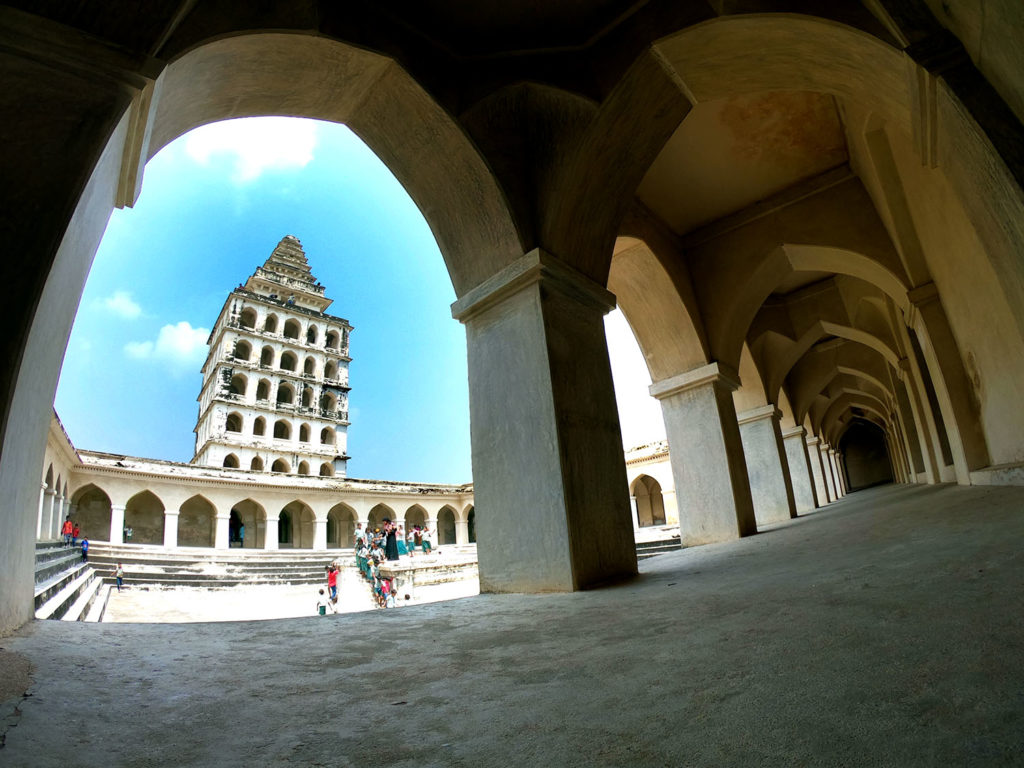
Maratha History of Gingee:
It was the time of Maratha Rising. The time came for them to rise and with time, came the man- Chhatrapati Shivaji Maharaj. During his Southern conquest (or, we Marathas call it as Dakshin Digvijay with pride), after the deal with Kutubshaha of Gowalkonda, Maharaj descended to Karnataka with 30,000 cavalries and 40,000 infantry, backed with Kutubshaha artillery, capturing Vellore and Gingee forts. Immigietly, Chhatrapati (who was well known as Gadh Pati i,e, Lord of the forts) started tearing down weak spots of the Gingee forts to build a better fortress. 20 feet fortified wall was constructed, connecting three hillocks, making it truly impregnable fort.
Veteran Missionary Andre Frier in 1678 writes in his correspondence “Sivaji applied all the energy of his mind and all the resources of his dominions to the fortifications of all the principal places. He constructed new ramparts around Gingee, dug ditches, erected towers and executed all the works with the perfection that Europeans would be ashamed of.” Chhatrapati handed over the fort to Harjiraje Mahadik, who protected it until Chhatrapati Rajaram took over it.
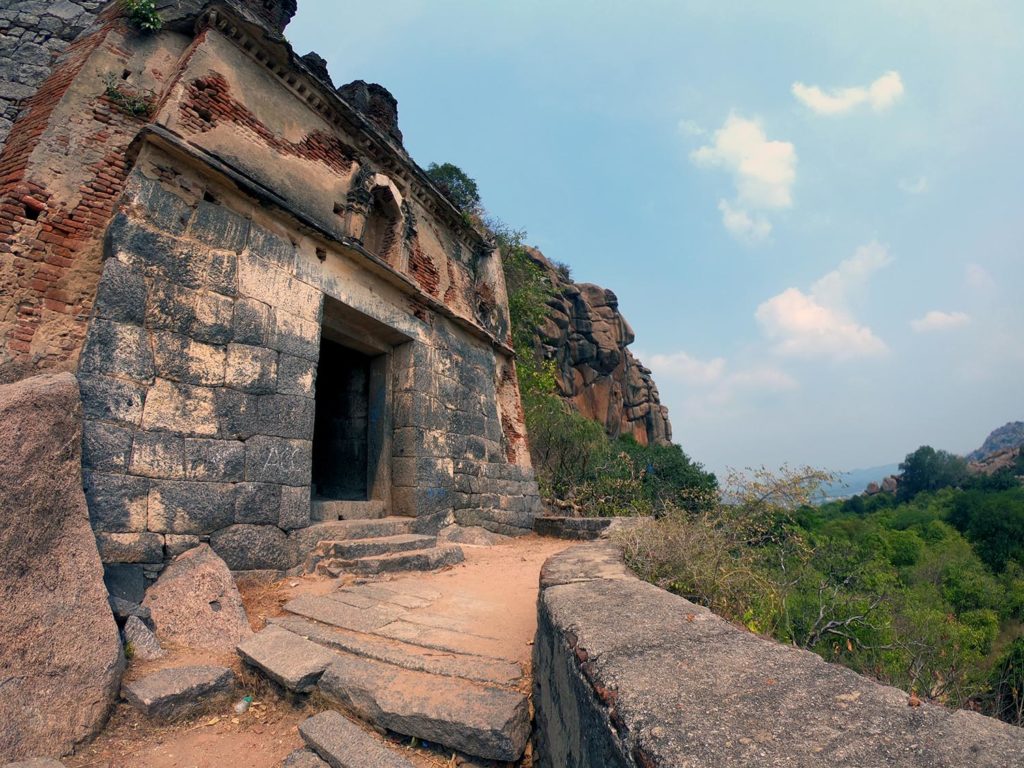
After crossing many rivers, towns, and kingdoms, fighting neck to neck battles, finally, Chhatrapati Rajaram Arrived at the Gingee. Zulfikar Khan was tailing him since he left Maharashtra. Asad khan, his son Zulfikarkhan, Dalpat Rai Bundela and prince Kamabaksh himself surrounded the fort with the ammunitions and thus, started the longest siege ever in Indian history.
Marathas literally harrassed Mughals during the night with rockets. During the daytime, Santaji Ghorpade and Dhanaji Jadhav use to circle like hungry vultures around Mughal camps, picking and killing them Mughals one by one. If they got bored killing, sometimes they use to kidnap Mughal Sardars for ransom.
Monsoon was the worst for Mughals. Diseases, thick muds and entire camp drenched in puddle were among the least problems as during these days, Marathas from the fortress used to attack them out of nowhere and then, after killing few hundred Mughals and after stealing their valuable war supplies, use to get back to safety inside the castle.
But all the skirmishes aside, it seemed to have some kind of mutual understanding between Maratha king and Zulfikarkhan from within. In these battles, sometimes Marathas won, and for the rest, Mughals used to one, but no one was ready to take this battle to the end. After eight years, Aurangzeb’s patient finally ran out, and when he himself started towards the south, with the help of Zulfikarkhan, Chatrapati Raja Ram escaped from Gingee with his family, and then, Zulfikar Khan conquered the fort. Chatrapati Raja Ram Maharaj finally reached Maharashtra again, and he continued the war of independence from there. Again.
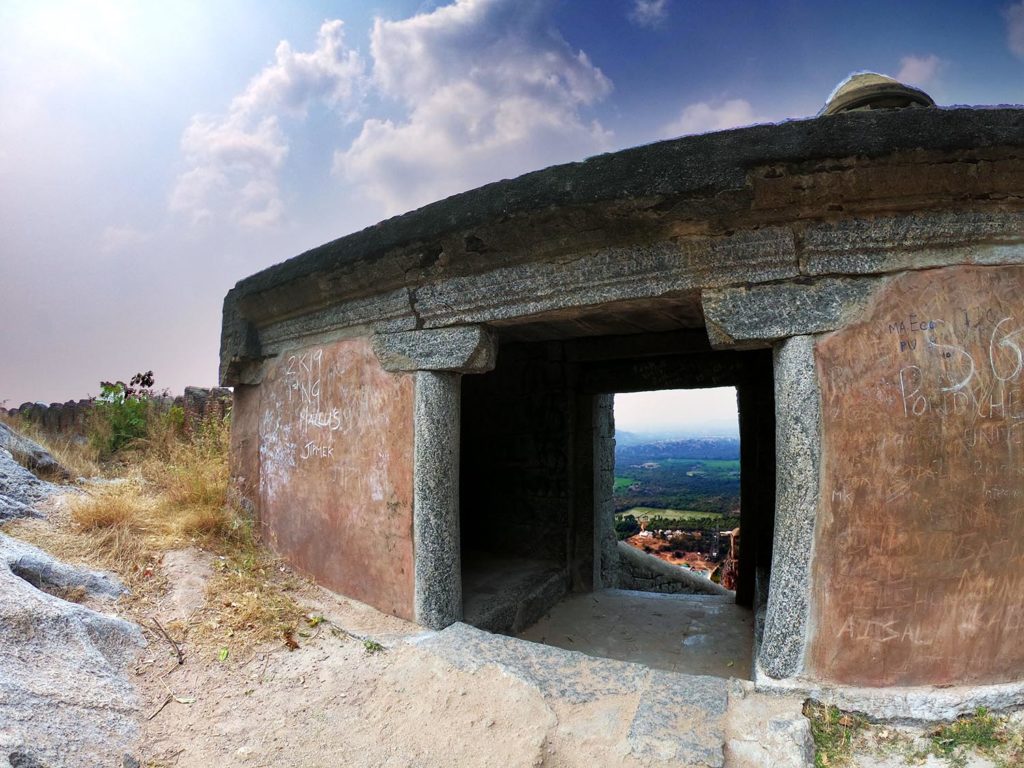
Here, one must give credit to extraordinary foresight of Chhatrapati Shivaji Maharaj. During his time, his kingdom was no larger than few districts of Maharashtra. But, realizing the need of the future, escaping the Bijapur territory, he reached south India to create a sanctuary, the last frontier for the Marathas. Chhatrapati Shivaji Maharaj taught us how to live. Chhatrapati Sambhaji taught us how to die. Chhatrapati Rajaram taught us, in hostile conditions how to take a step back, to rise again.
Sri Ram of Ikshwaku clan is no doubt every Indian’s one of the favorite gods. He had to go to exile for 14 years, where he faced unimaginable dangers, obstacles, and literally, the king of demons. The king, carrying his name, had the same story. But, with a smile and a brave heart, he carried on, never giving up, and came back from exile, to his motherland Maharashtra to transform his Kingdom into the empire.
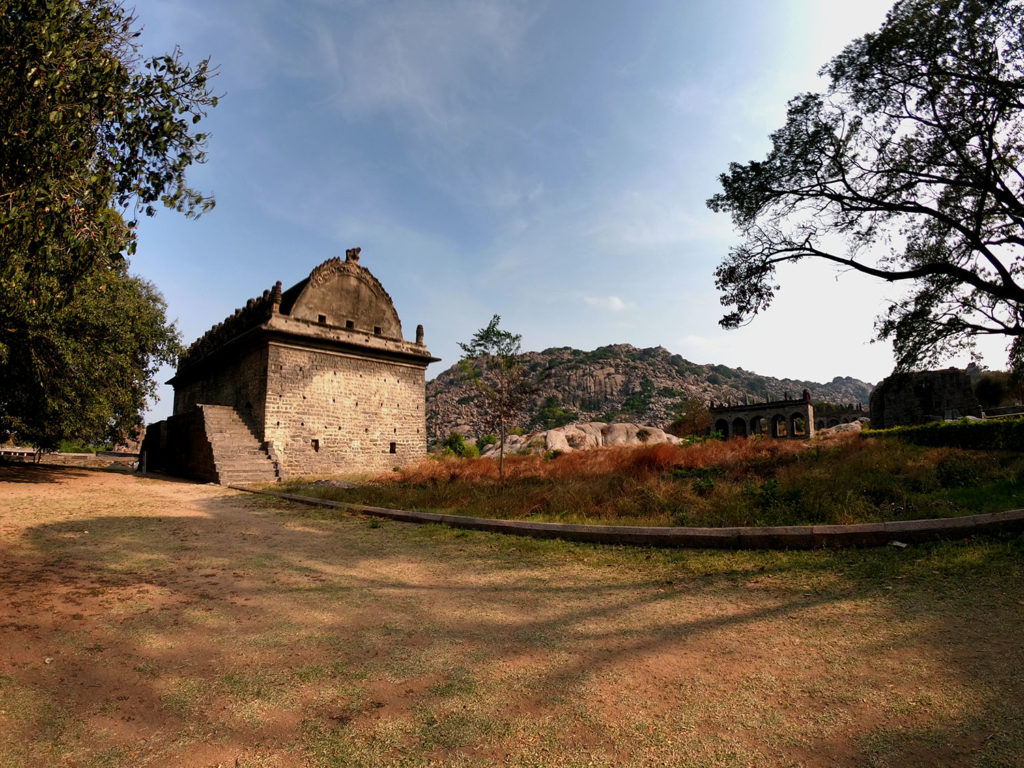
Gingee post-Maratha History:
After the fall of Gingee, Alamgir appointed Bundela leader Swaroop Sing as guardian of the fortress, and it was the beginning of Bundel Rajas of Gingee. Many ballads have been written on these guys. After the siege of Mughals, the siege of nature begun, under the leadership of mosquitoes. Severely horrible malaria outbreaks forced Mughals to move their southern stronghold from Gingee to Arcot.
During the wars between French and British East India Company, french managed to conquer it in 1750. After the loss of 1,200 soldiers, not to British attacks, but to malaria, finally, french lost it to Britts in 1860. British put down this once a legendary fort to the best use they knew- making a prison out of it. Governer George Pigot of Madras presidency in 1775 noted down “the prisoners could be sent to Gingee, a place to which nothing could tempt a state to doom any of its subjects, but great advantages resulting from its situations and strength-a place whose pernicious air and water plunge into irrevocable sickness and pain almost all whom necessity compels to inhabit it for a time. That is the place you have chosen for your prisoners who would suffer a lingering death.”
In 1803, Arcot collector suggested demolishing the fort, but the whole plan was thankfully rejected. Along with current residents – Malarial mosquitoes, wild beast, and thieves moved into those buildings. Eventually, after a few decades, Britts came to their senses and in 1920, declared the fortress as a national monument.
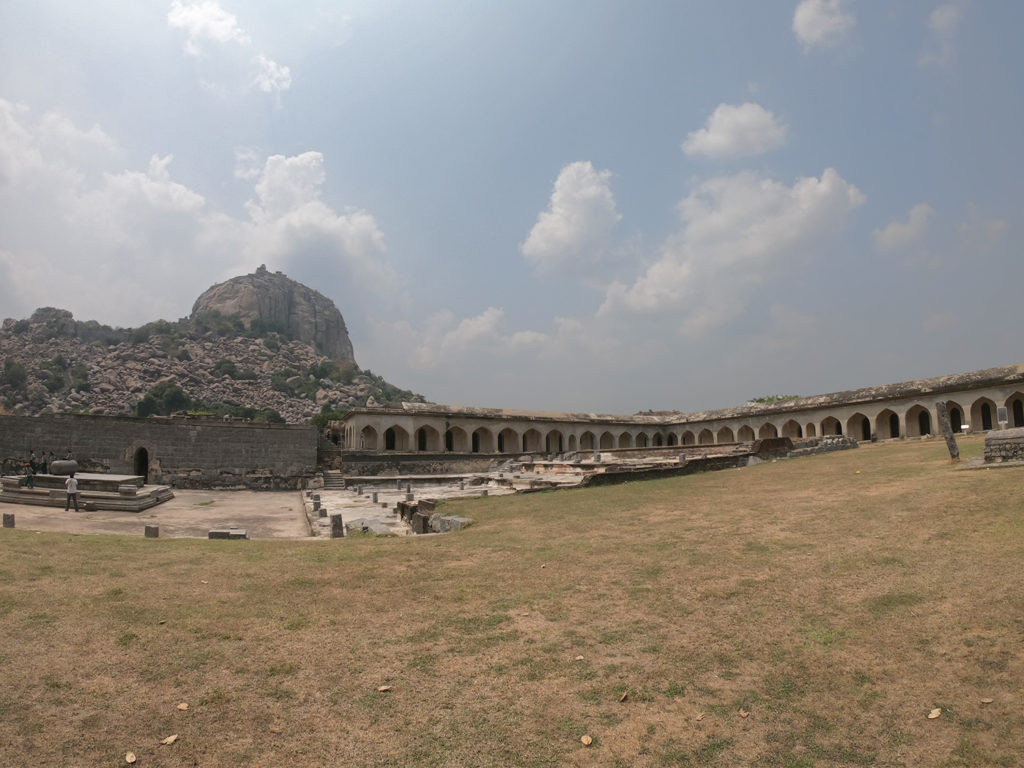
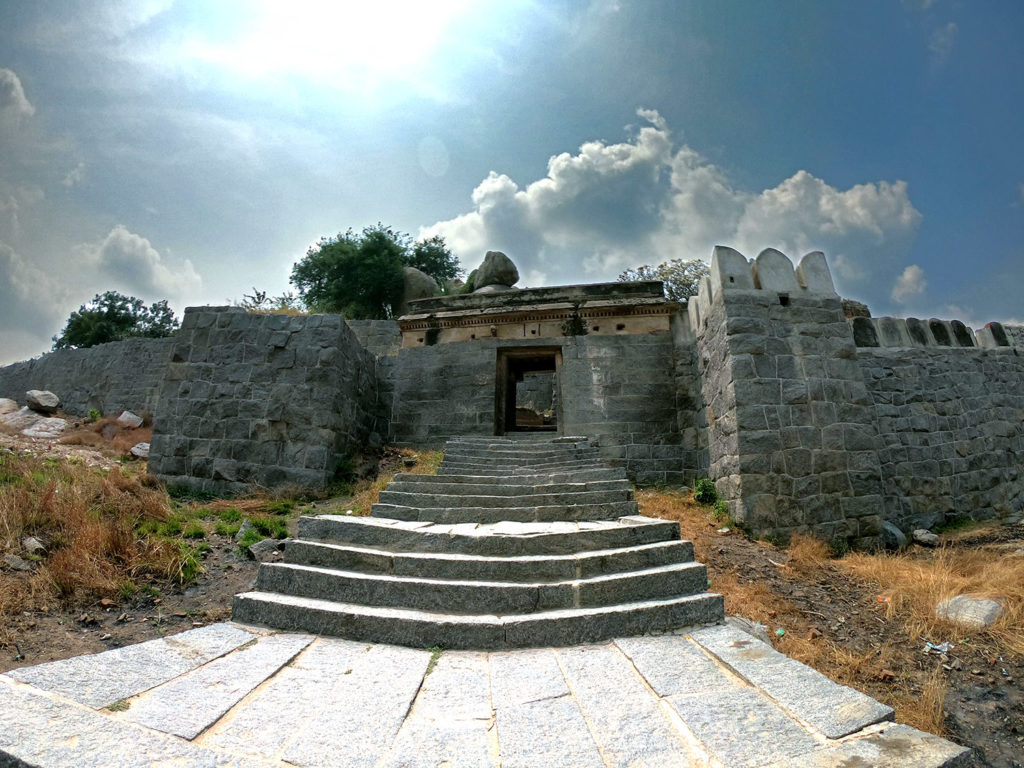
How to reach Gingee:
? By Bus: There are very few direct buses from Chennai to the Gingee town. From Bangalore, there are no direct buses, you have to go to Thiruvannamalai, and then have to take the Gingee bus from there.
✈️ By Airplane: Nearest airport to Gingee is Ponichery or Puducherry airport which is about 70 KMs away. from the airport, you might have to take a cab towards the fort.
? By Car: Gingee is a small town in Tamil Nadu State, 160 kilometers from Chennai, 240 kilometers from Bangalore and 70 kilometers from Pondicherry.
? By Train: Nearest train station to Gingee is Tiruvannamalai (35 KMs away) which has decent frequency of passenger trains.
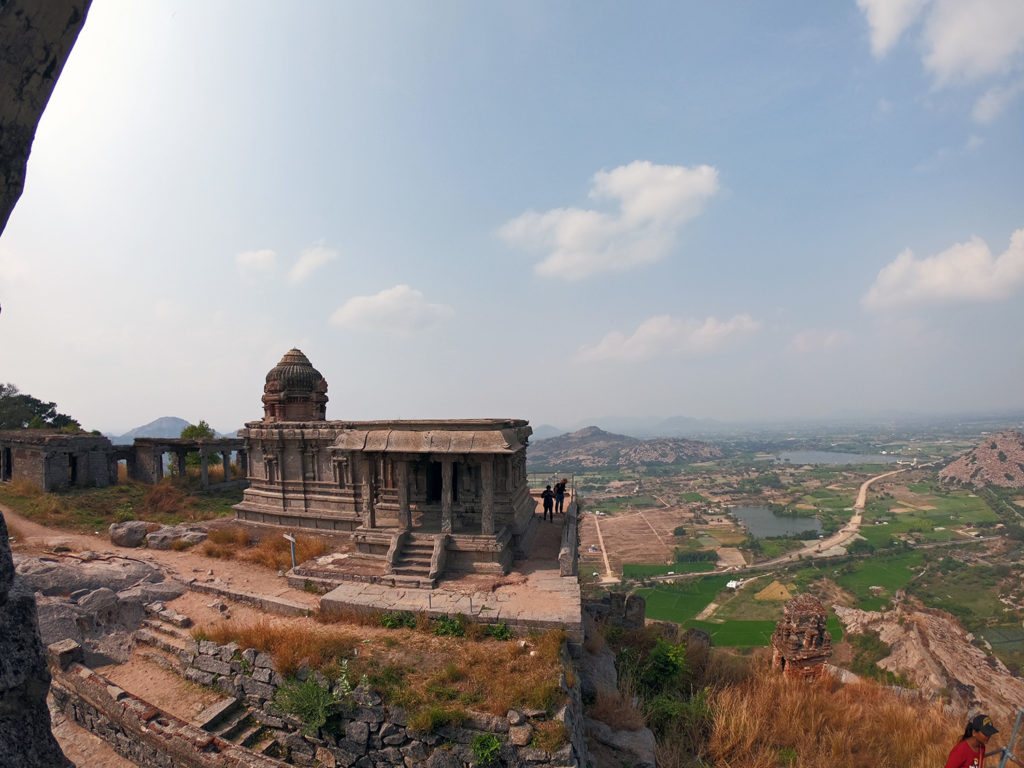
Gingee fort Timings and Tickets:
Gingee Fort is open for all days across the year. It opens at 09:00 in the morning and closes at 17:00 in the evening and entry is banned after 15:00. For Indian citizens, its 5 Rs, and for foreign national, its 100 Rs. Extra charges will be applicable to video shootings.


Gingee Fort Trek Tips:
1. Gingee is not a common fort, its a fortress. I advise keeping at least two days aside to explore it.
2. Carry food and a lot of water as there are no restaurants available nearby, nor at the top. In this area, the weather is humid and sunny, so it’s essential you carry a lot of water during the trek in order to avoid dehydration. There is a tap of groundwater nearby gymnasium building after the fort entrance, but not sure whether it’s drinkable or not.
3. Even though you are carrying food, be careful where you eat. These hills are famous for their notorious monkeys. One whiff of your Fritto Lays or Sneakers, will follow you and even will attack you if provoked for food.
4. Being from Maharashtra, we were used to starting the trek before Dawn, but here, fort opens at 9 in the morning, and you have to climb the hills in the scorching sun.
5. Entry to the fort is not allowed after 3 in the afternoon as it is very difficult to complete the trek and come back before 5 when fort closes.
6. You will face a language barrier if you are from the Hindi speaking belt of India.
7. Make a hotel reservation in Thiruvannamalai as there are not many hotels available in Gingee.
8. This fort has enormous significance in history, and so does the job opportunities related to tourism. But due to the government indifference, negligence or red tape, there are no local guides available to tell the glory of our ancestors, which is the worst thing about this fort. I have seen schoolchildren coming in flocks, just roaming here and there aimlessly, with their equally uninformed and uninterested teachers, and wandering away, and this site is truly heartbreaking.
9. Very few options of Bike rentals are available in Thiruvannamalai, and most of the bikes will be unavailable… So, keep these things into mind before you plan your trip. But, let me assure you, despite all these barriers, if you somehow make it to the top of Rajgiri hill, the view is just a rewarding experience…
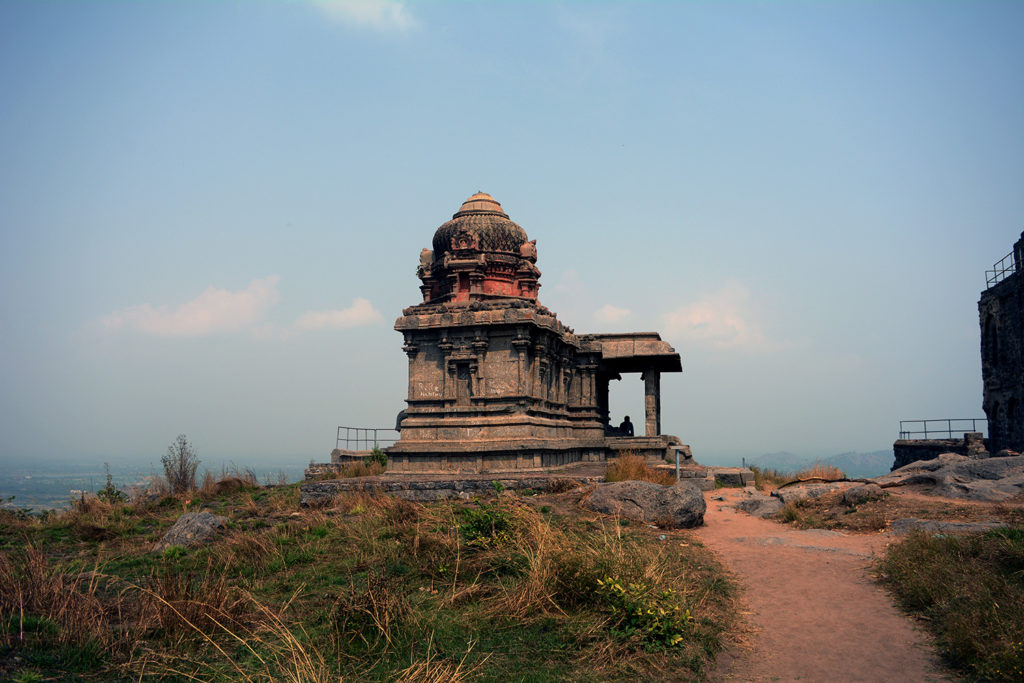
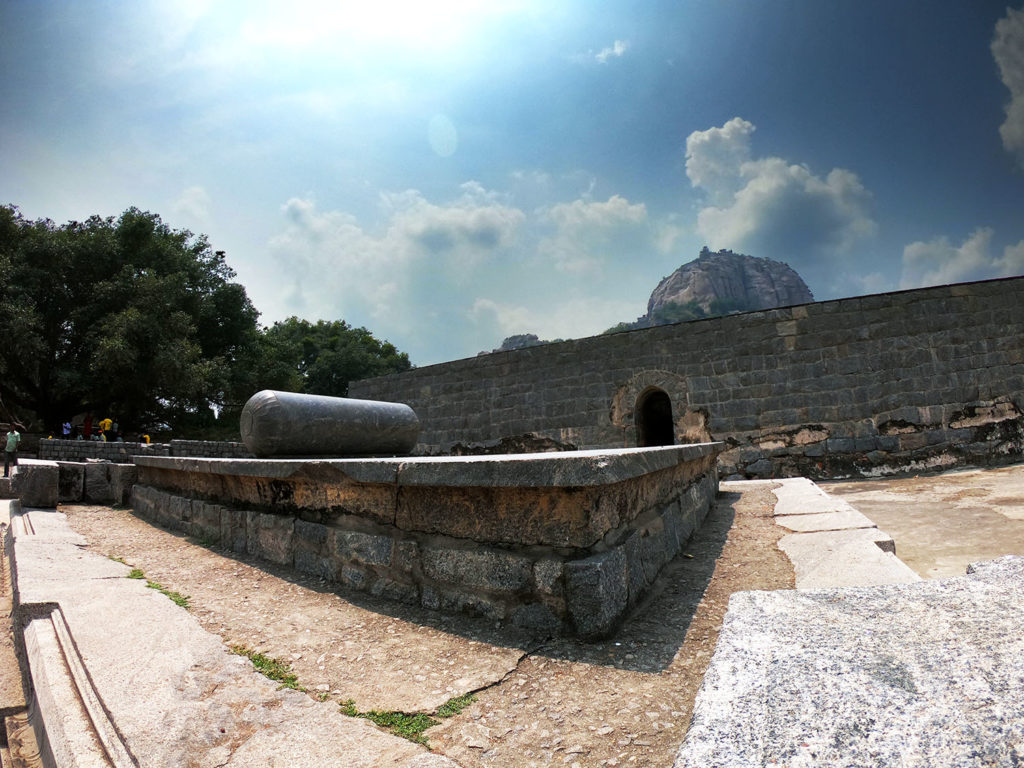
The Architecture of Gingee:
When Chhatrapati Shivaji calls a fort – Most Impregnable Fort in India, When Britts call it – the Troy of the east, you have to believe it. Imagine a giant triangle on earth. On each point, somebody has created hills by gathering giant boulders on top of one another. on the top of these boulders, they have erected the buildings, water tanks, storage units, etc with the finest architecture. and then, these three hills are connected with each other with 5 meters wide fortification wall, protecting the town inside. These three hillocks are Rajgiri, Krishnagiri and Chandrayan Durga. This is the architecture of Gingee in a nutshell.
As many dynasties flourished here, and hence, you will see their impressions on the buildings they have created. As you start to get closer to Gingee town, you have to cross 15 feet wide fortified wall. Straight you go to the Gingee town, the left is towards Krishnagiri hill. You take a right towards the fort right after crossing the fortification to reach the ASI office. Park your car near Mohobbat khan Mosque, and start walking towards the main gate. The curved fortified gate takes you to the ticket counter. Pay the tickets, and walk-in towards Rajagiri. You will cross seven gates before you will reach the top. There is a small museum, filled with Hero stones, cannons, Shalabhas and many more sculptures. Take as many photos as you want and walk ahead.

Kalyana Mantapa: The first spacious construct you will see is the Kalyana Mahal. Eight storied building, standing tall with a roof like a temple attracts your attention. This building is surrounded by a tall wall with canopies inside. The huge courtyard and the tall platform in the middle bring the structure altogether. Beyond the Kalyana mandapa, you will find a platform across the ruins. On the decorated platform lies a giant Bolster shaped pillow made up with monolith rock. That use to be a place for the throne from where rulers use to meet, greet and rule their kingdom.
When you walk pass by the giant Peepal tree, you will see a gymnasium building beside a well-constructed lake, known as elephant pond. In front of these, you will find ginormous airplane hanger like structures namely granaries. Rice, cultivated in the fields surrounding the fort used to be stored here for emergency use.
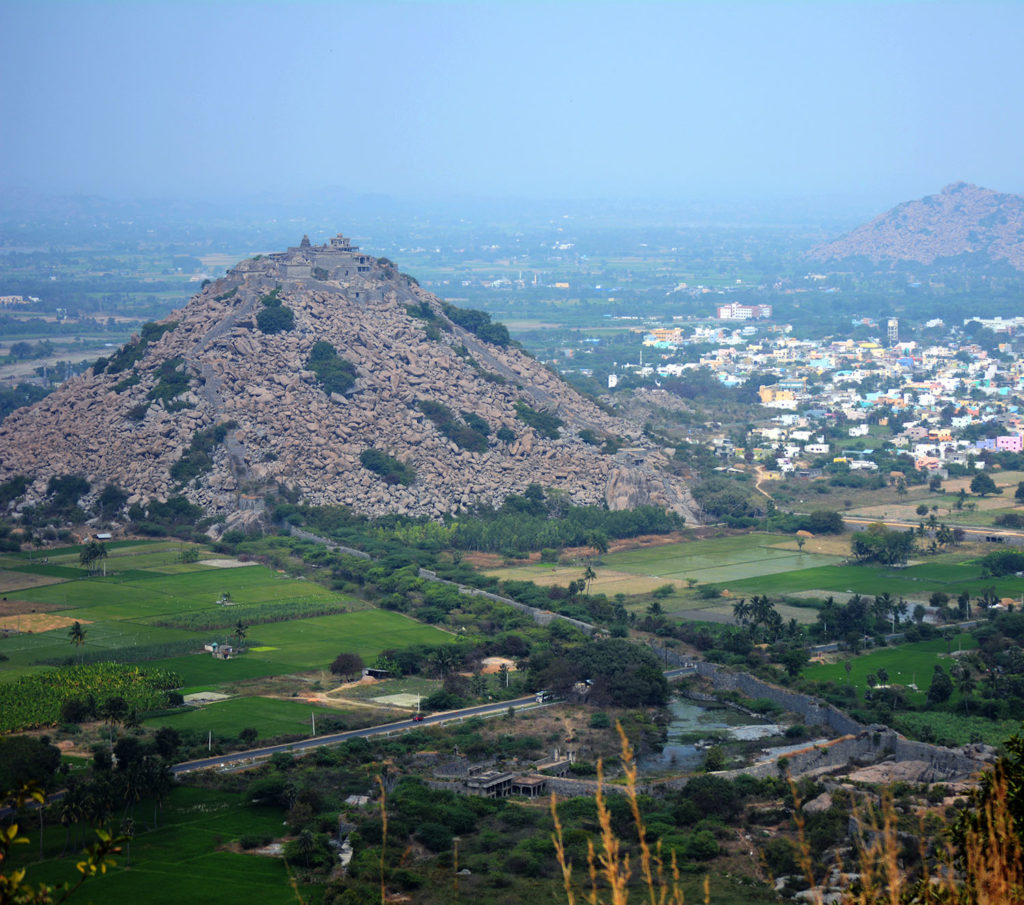
Click the snaps of some more ruins, and head towards the Rajgiri hill. Usually, being a trekker, you are used to starting your trek before sunrise. Here, due to unusual timings, you have to start your trek at ten. in these areas, the weather is humid and particularly hot. Uneven steep steps, barren lands without tree cover and the overheating sun make the simple trek difficult. Occasionally, waiting to drink water and to take photos, helps to catch your breath in between. Cross three entrances and only intact cannon mounted on a bastion, and you will reach to Sri Kamalakanni Amman samadhi temple. Three tridents fixed deep inside the ground welcome you. Do not skip the stone in front. This is one of the unique rock, where you will find a buffalo and ox head, surrounded by four human heads. This is a sacrificial rock where buffalo used to be sacrificed on auspicious occasions.
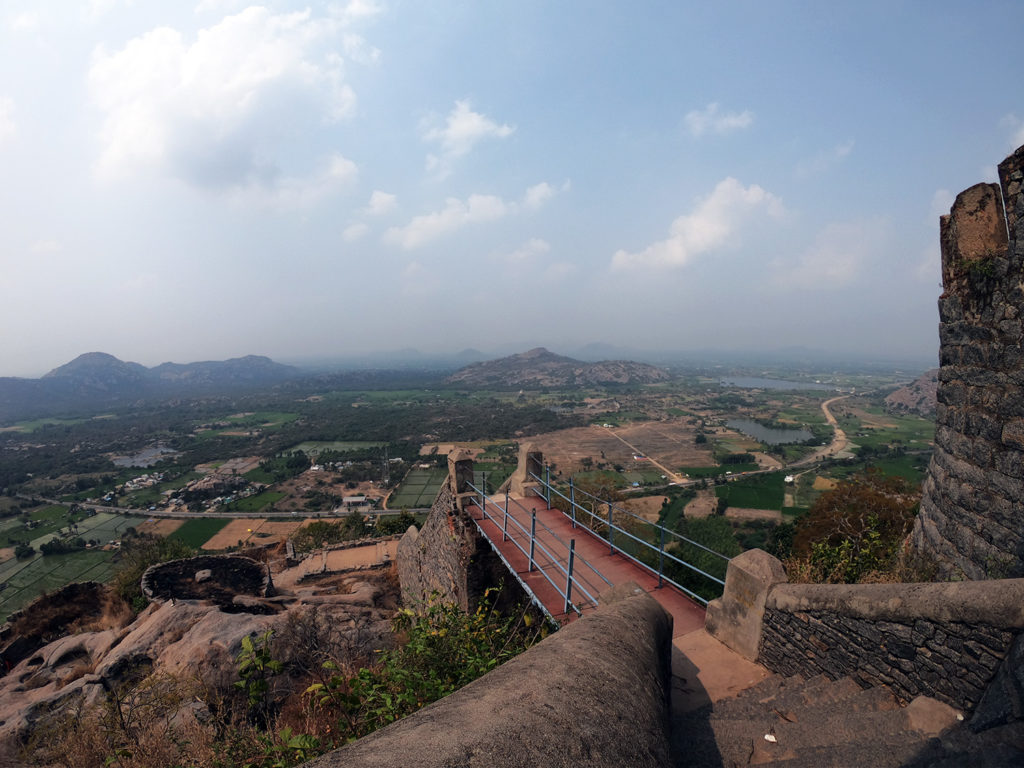
Take a break here, but be careful while opening your snacks. This place is well known for the notorious monkeys. They won’t leave your pursuit until they take everything from your hands. Just like Indian traffic police, standing on the corner of your road, hiding.
Cross a few entrances more, and you will be standing in front of a trench bridge. This trench bridge is constructed to defend the core fort area from invaders if such a situation arrives. The bridge can be retracted inside the fort walls in order to stop the advancing invading army. Cross that bridge, and you will reach the top of Rajgiri. You will find yourself in front of a breathtaking panoramic view of the surrounding area. Krishnagiri and Chandrayan Durg can bee clearly are seen from here. Spreaded Gingee town lies beyond that.
Vijaynagar era constructed Venkat Ramana temple, bastions, Lakes, fortification, roads connecting the town and much more can bee is seen here with a beautiful view. Remove your backpack outside the Ranganath temple. The temple is constructed with southern Indian architecture, but it’s not too big neither too small…Just appropriately enough to decorate the[is a brilliant panorama. Step inside the temple to visit the deity. Calm down for a while outside mandapa, in the cool breeze.
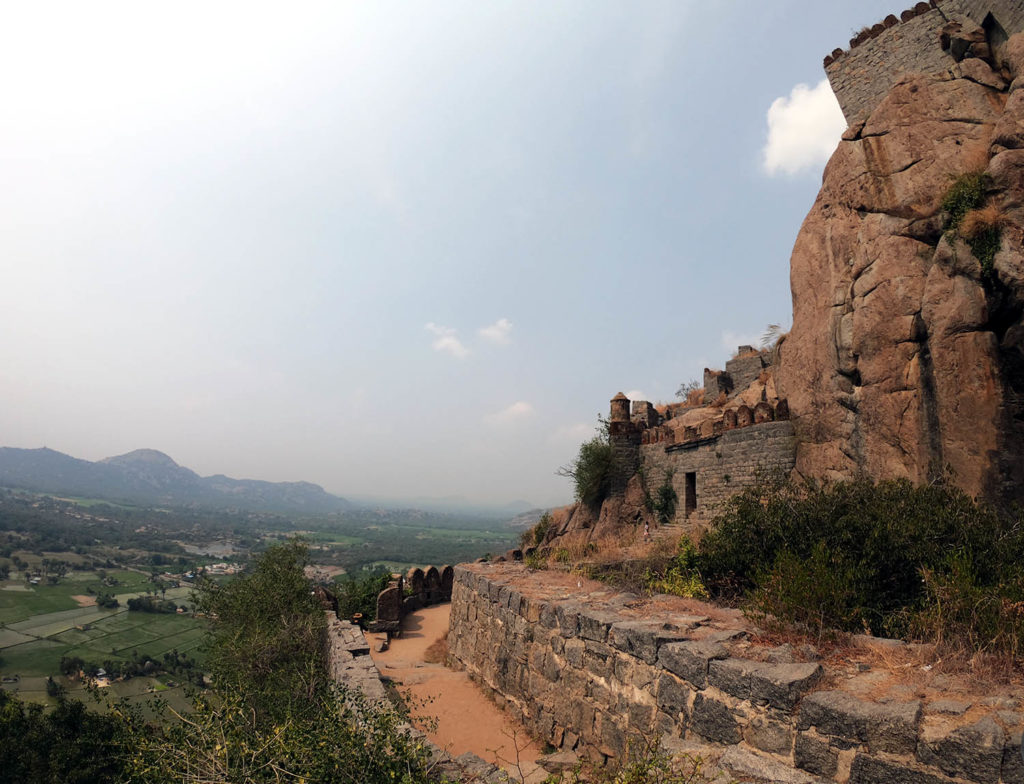

Just beside the temple, there is a bastion, which is the topmost point of the fort. Beautiful, panoramic, picturesque, photogenic, pretty, unspoiled are just the words. What you will see is I won’t be able to describe in my words, its the experience to feel. Explore nearby granary and treasury or Jamdarkhana as well. Besides these, there is a building or a palace-like structure standing, where we can assume Rajaram Maharaj or whoever was in the command used to live. Control your explorer within as you have to climb Krushnagiri as well.
Getting down rapidly is not a difficult task. Descent all the way towards the parking, take your car and cross the highway on which you must have taken the right turn. Park your car in the Krishnagiri parking lot and start climbing the Krishnagiri. Krishnagiri might be a steep climb, but not as long as the previous one. Once you reach the top, you will see Rajgiri, Kalyan Mahal, Chandrayan Durg and much more. On top, you will see bartizans constructed by french, as well as beautifully ornate Kalyan Mantap, along with Hawa Mahal. Krishnagiri is smaller than Rajgiri and hence takes lesser time to explore. Chandrayan Durg was closed as it was getting late, so we decided to explore Vijaynagar timed temple called Venkatramana temple.
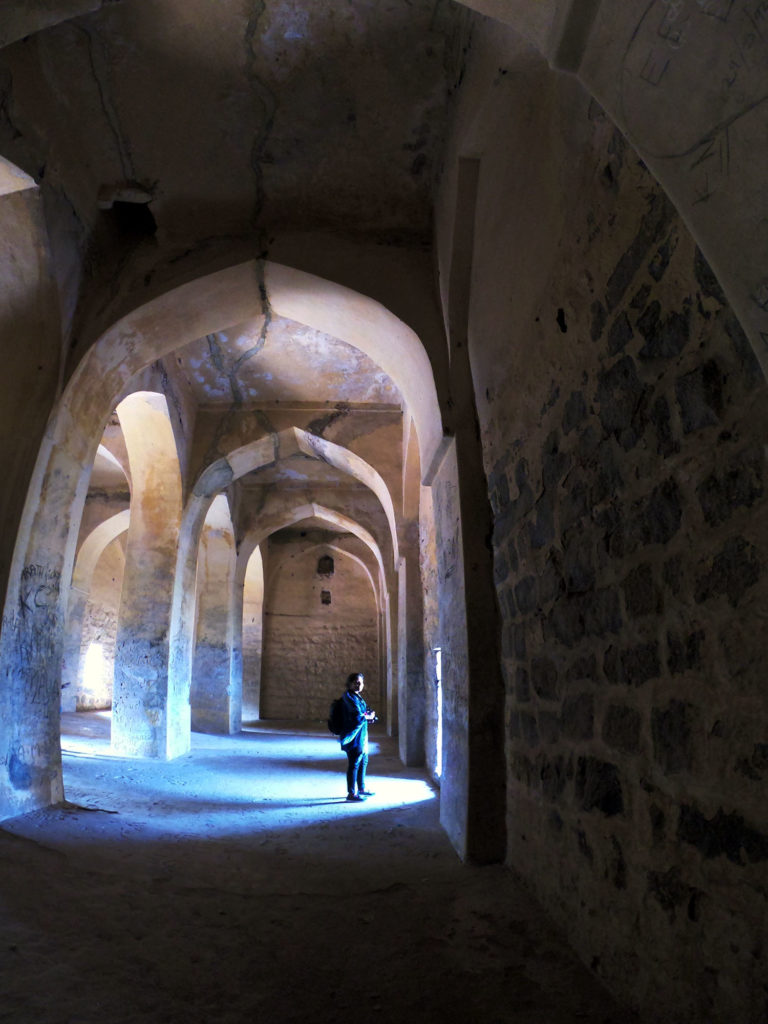
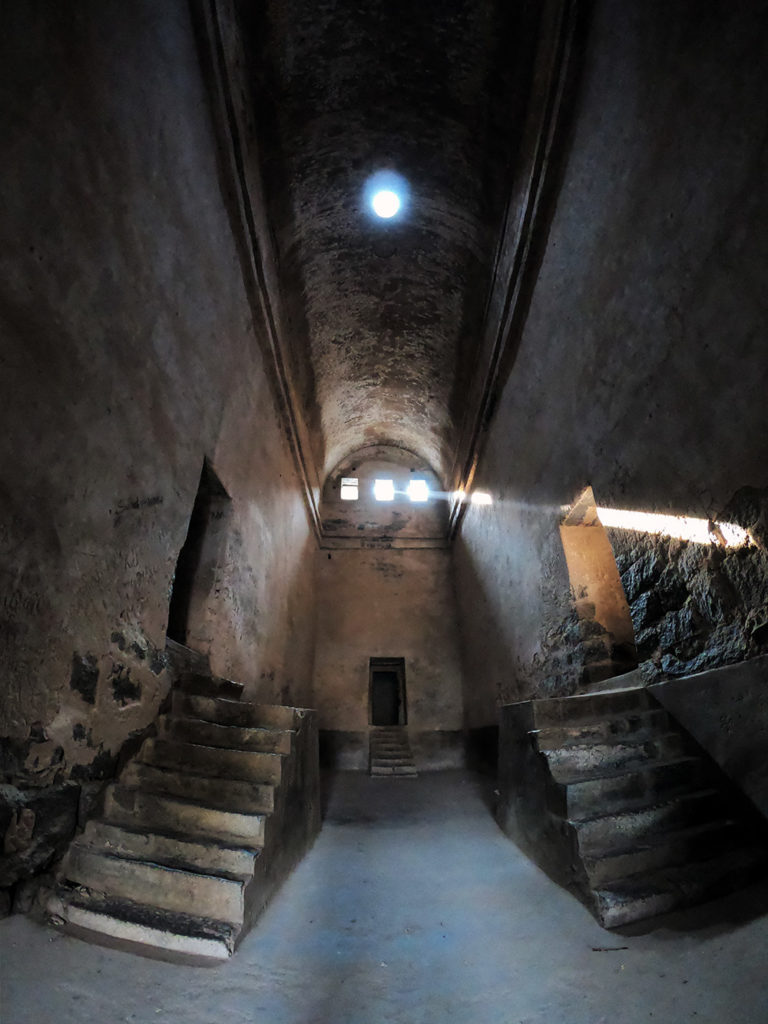
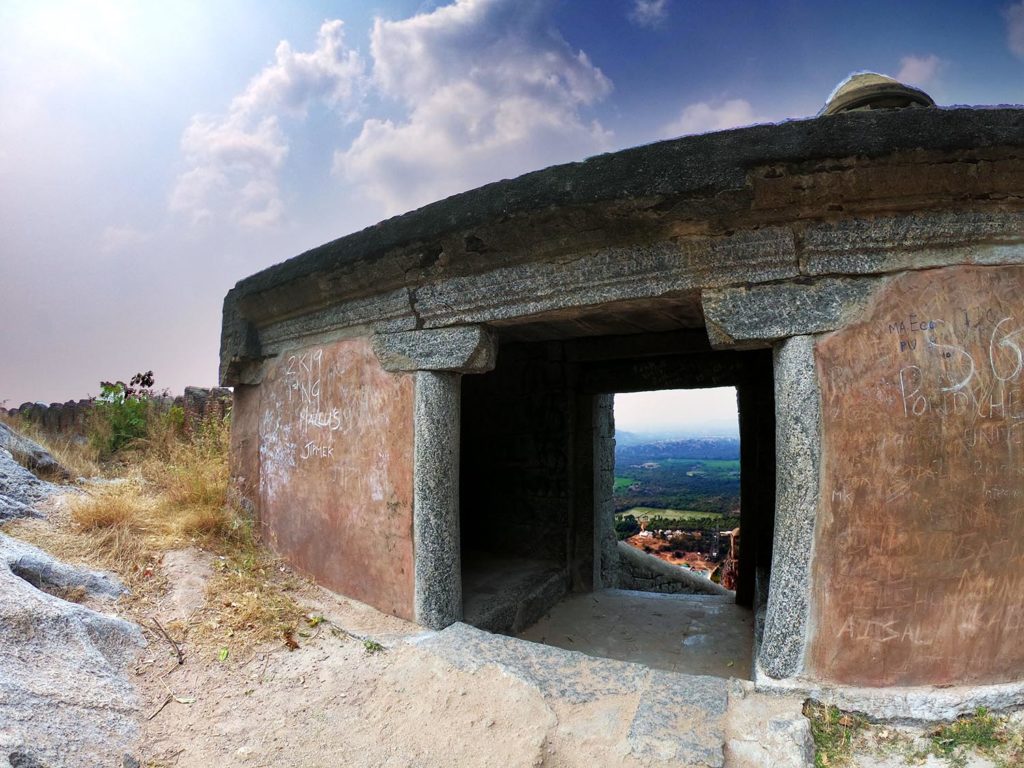
Venkatramana Temple Gingee:

Keeping the Gingee fort main entrance on your back, drive through the parking lot, towards the temple. Narrow road cutting through lush green paddy fields will take you to the temple. Nayaks were the rulers of Tamil Nadu from the 16th to 18th centuries. Construction of this temple started in 1540 and finished in 1550, was built by Muthiyalu Nayaka, the ruler of Gingee under the Kings of Vijaynagara. This well-planned temple complex has three gigantic gopurams, with deities such as Devi, Aandals, and Narsimha.
The entire temple complex is surrounded by a tall wall, with multiple mandapas constructed inside. Most brilliant carvings can be found at the entrance of the main gopuram. Scenes from Ramayana, Puranas, Samudra Manthan, etc are depicted here on the entrance. Once you step in, on the right side you will find the elephant pond, which never goes dry, even in the drought years.
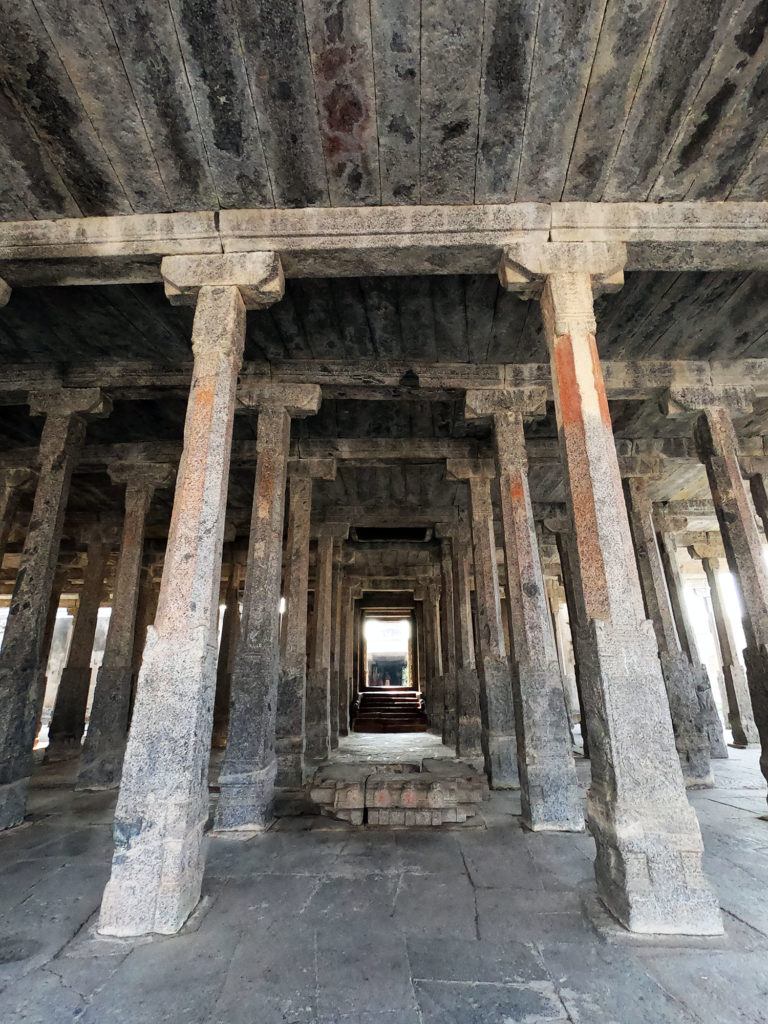
The roof of the Venkatramana temple was held aloft by 1000 pillars. Hampi or Vijayanagara style sculpting can be seen on each and every pillar in the form of Brahmapreta, yakshas, and madanikas. This temple has that distinct grandiose architecture that even today awes the visitors. Some of the most beautiful pillars were removed and taken away by French during their rule of Gingee. In Pondichery, french was erecting a statue of Mr. Dupleix, the Governor, and these ancient pillars were used for the construction of their monument. Just imagine, somebody would have done that to their Monalisa or to Arc De Triomphe, how will these croissant eaters will react…

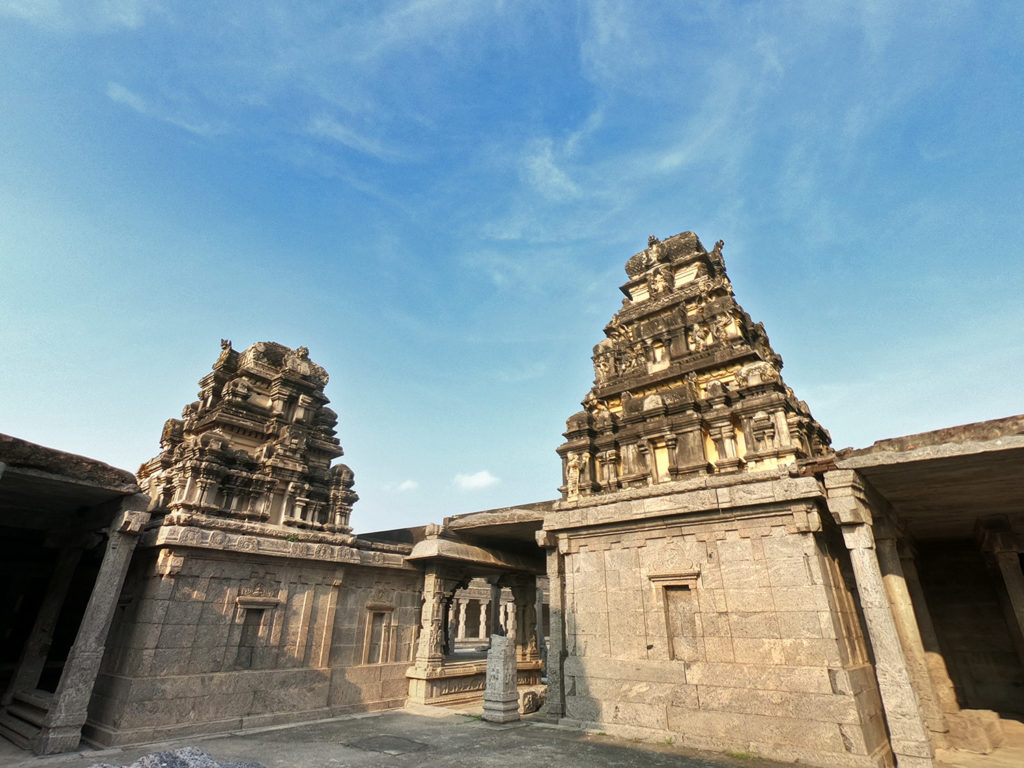
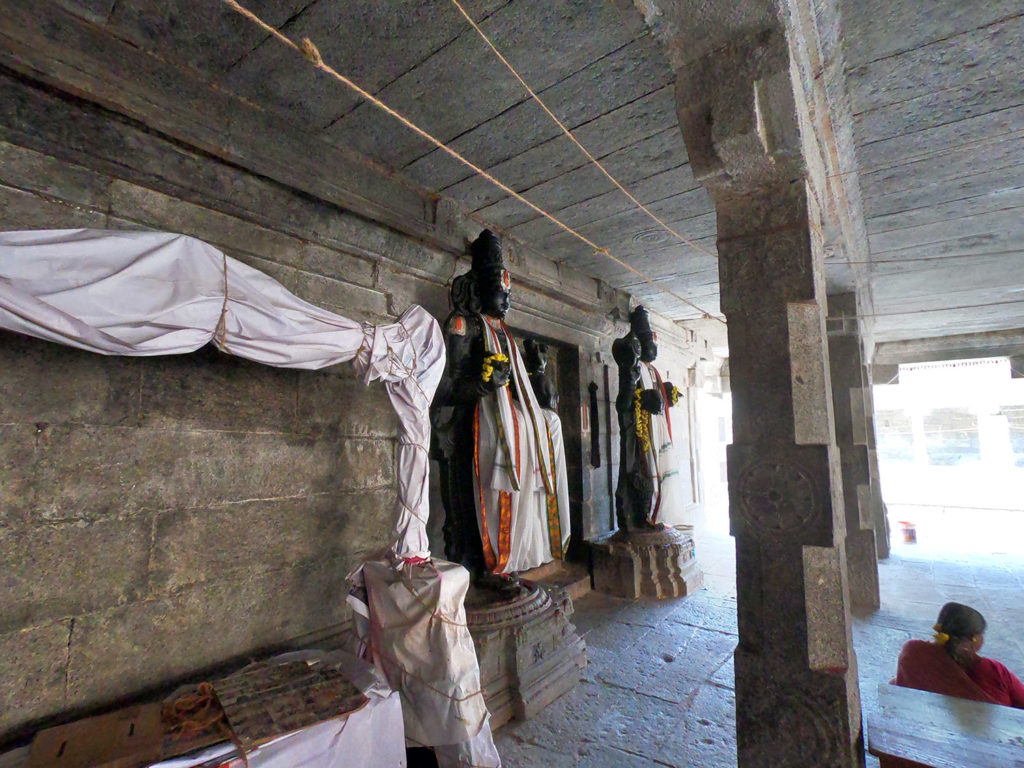
Temple walls are adorned with Tamil inscriptions, stating the structures erected by the Nayakas all over south India at different times. It was the time of sunset when we entered the temple. We had to remove footwear, as its a live temple now. Villagers have recently established Venugopal in this temple, where every day, Arati is performed praising him and his two wives. After conversing with the priest, we started making our way through hundreds of tall pillars. One grandmother with her friend was sitting there, started singing Venugopal bhajan. Surya Narayana started filing the temple with his warm golden rays, the singing of the old devotee carried us to the golden old days of the Vijaynagara empire. After spending some quiet time there with Amruta, we exited the temple just before the dark.
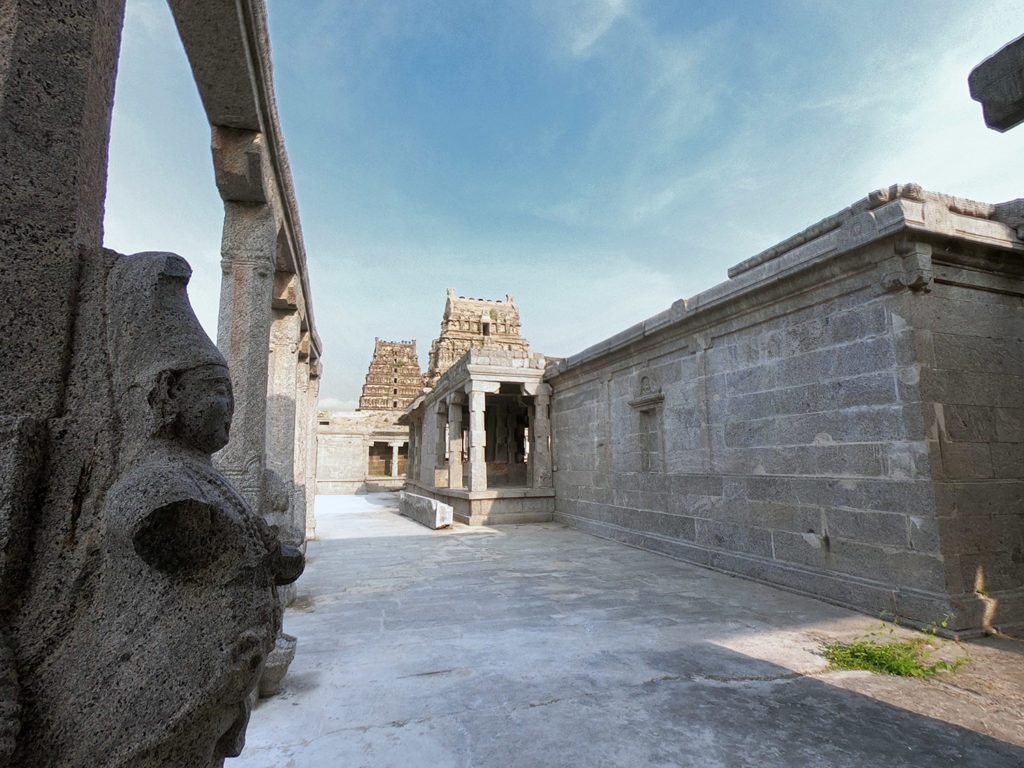
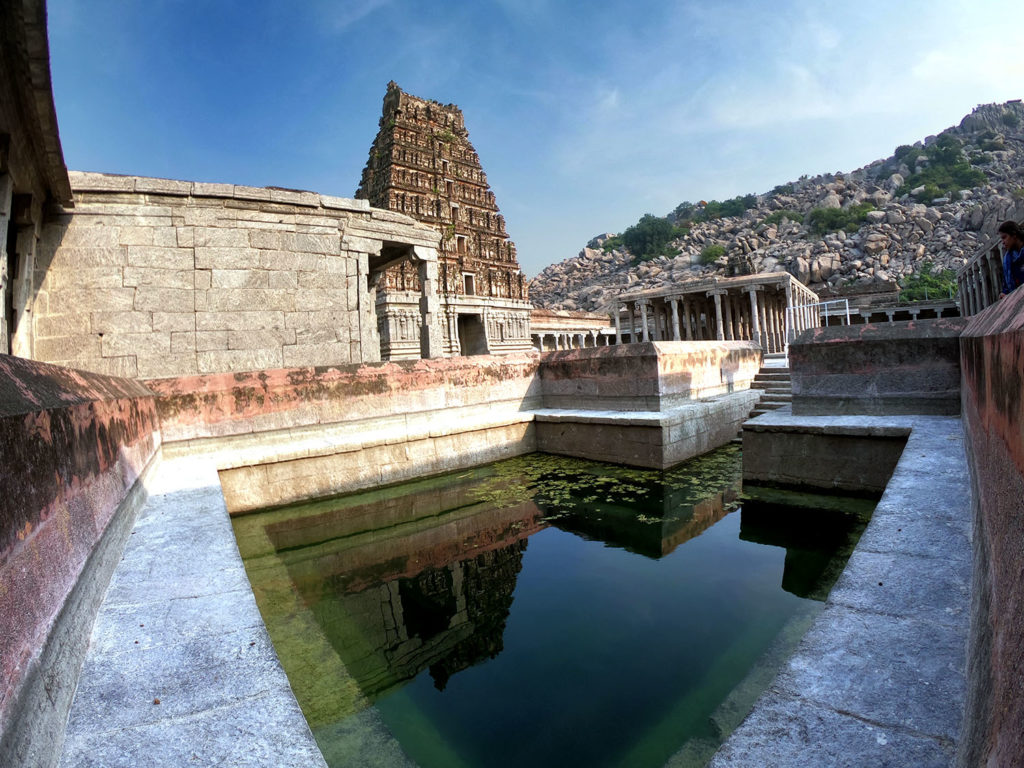

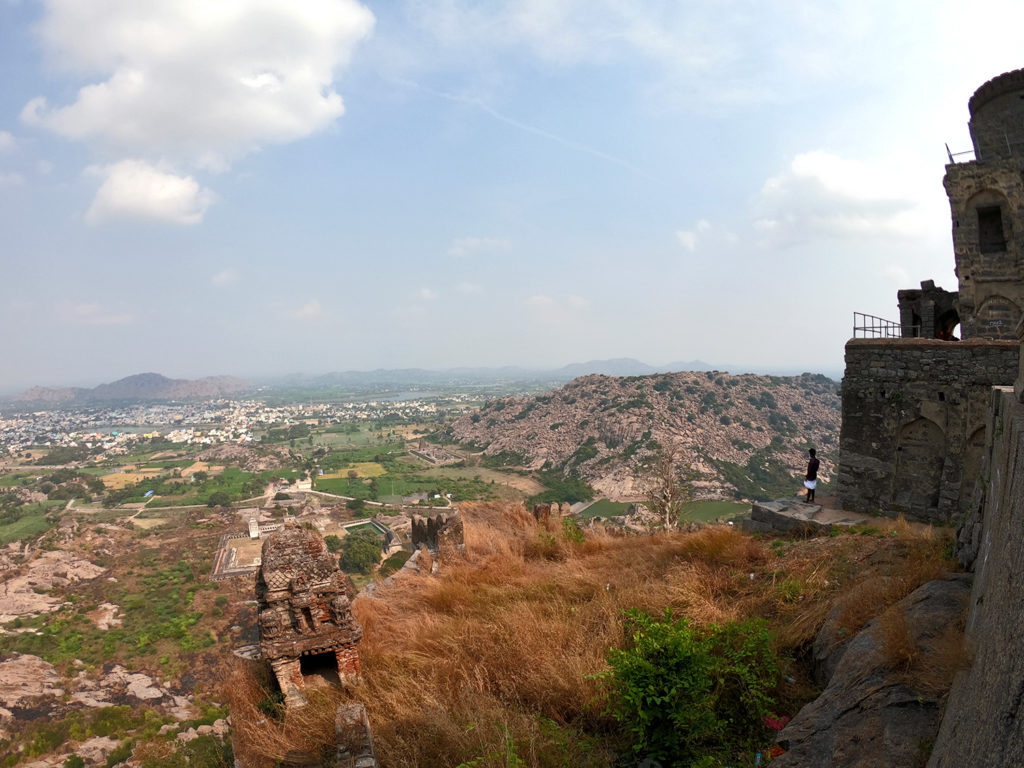
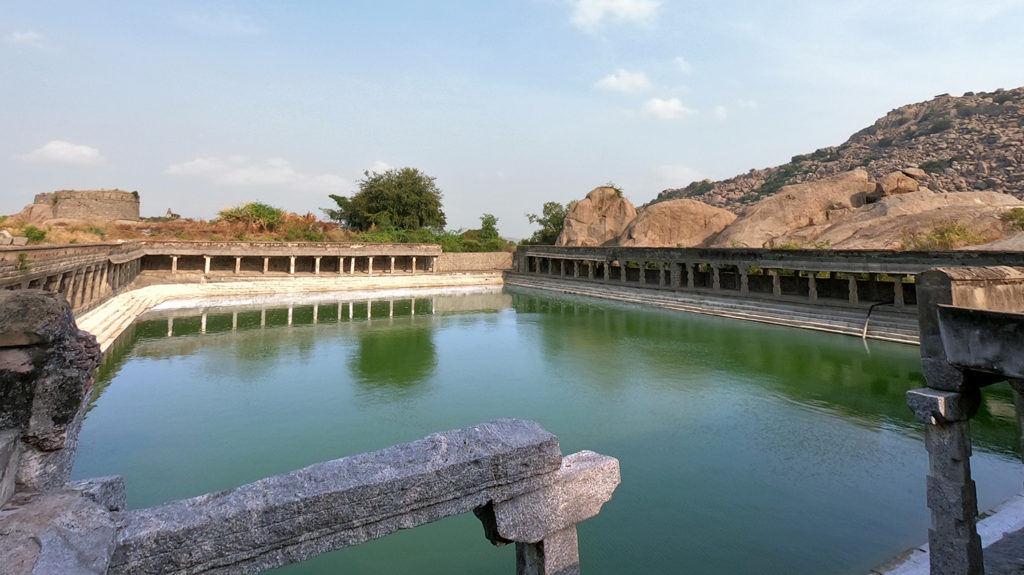

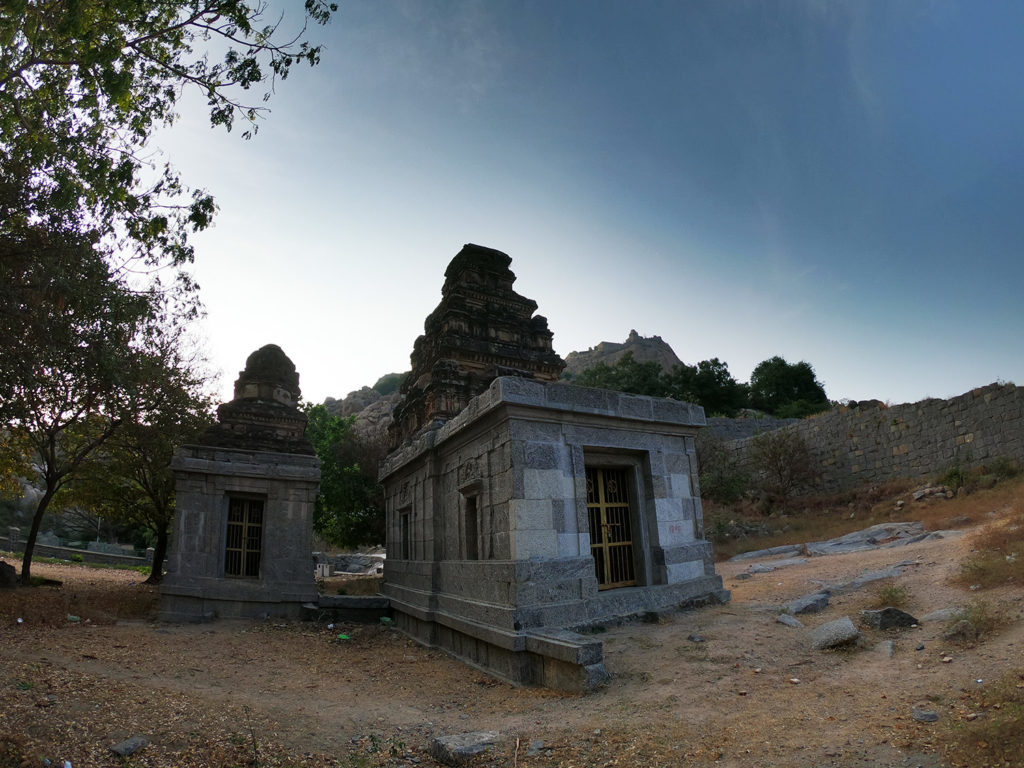
References:
1. Kille Gingee, Mahesh Tendulkar, Snehal Prakashan Publishers, 2013 Edition
2. https://www.livehistoryindia.com/amazing-india/2019/06/30/gingee-fort-troy-of-the-east
3. http://www.gingeefort.com/History.asp
4. http://www.gingeefort.com/.
5. The Cult of Draupadi: Mythologies: From Gingee to Kurukshetra, By Alf Hiltebeitel, Sept 1991, Shri Jainendra Press, India.
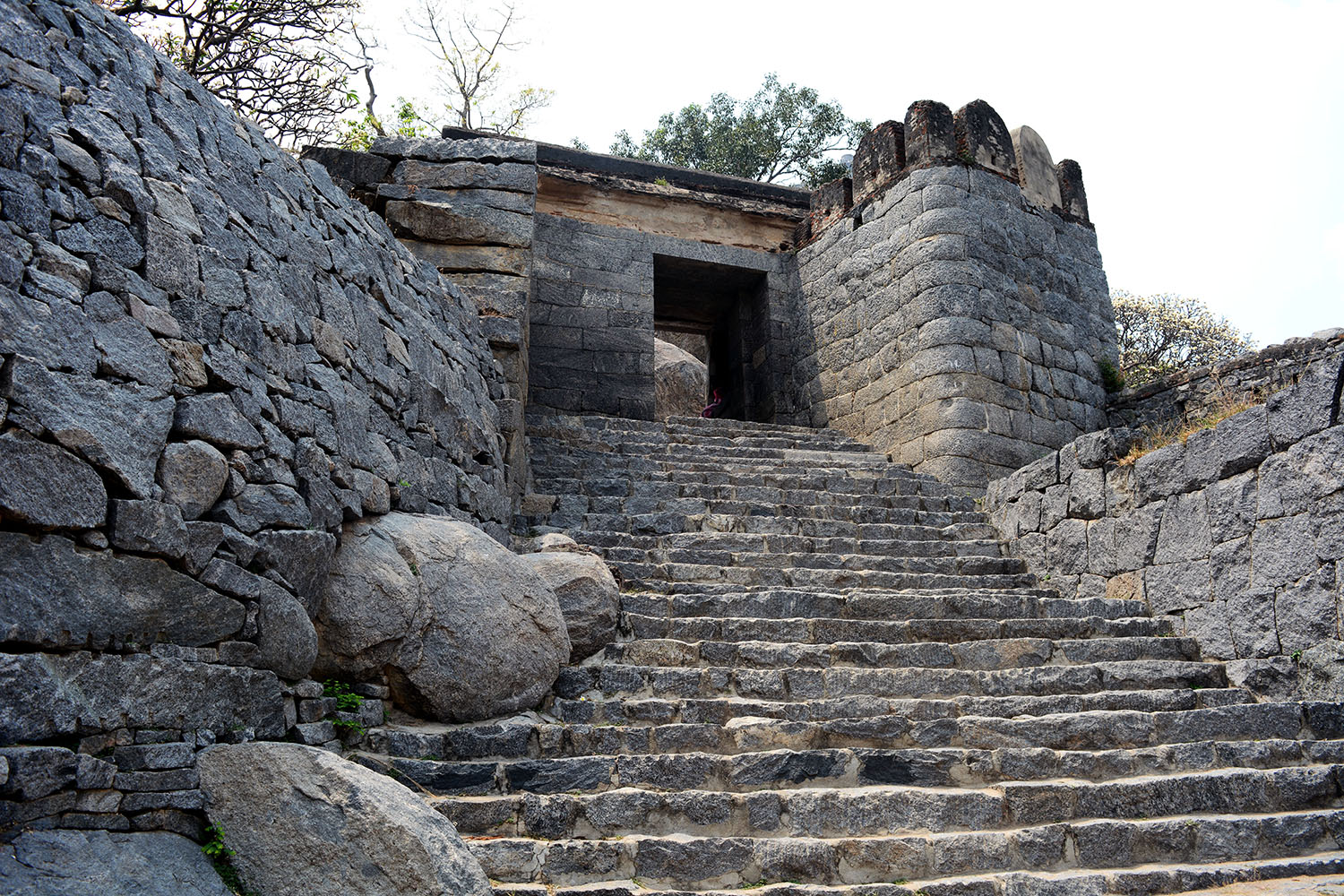
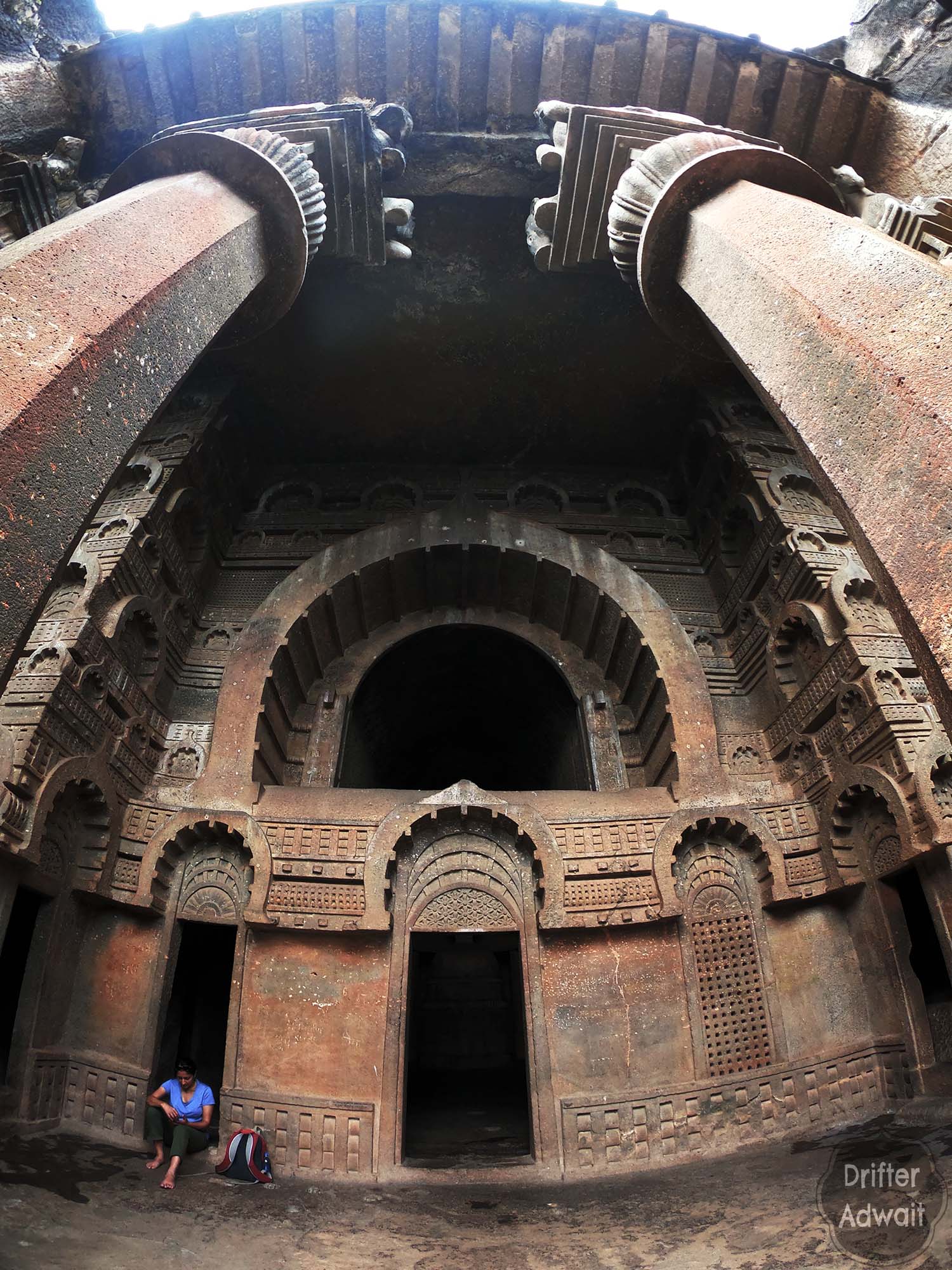
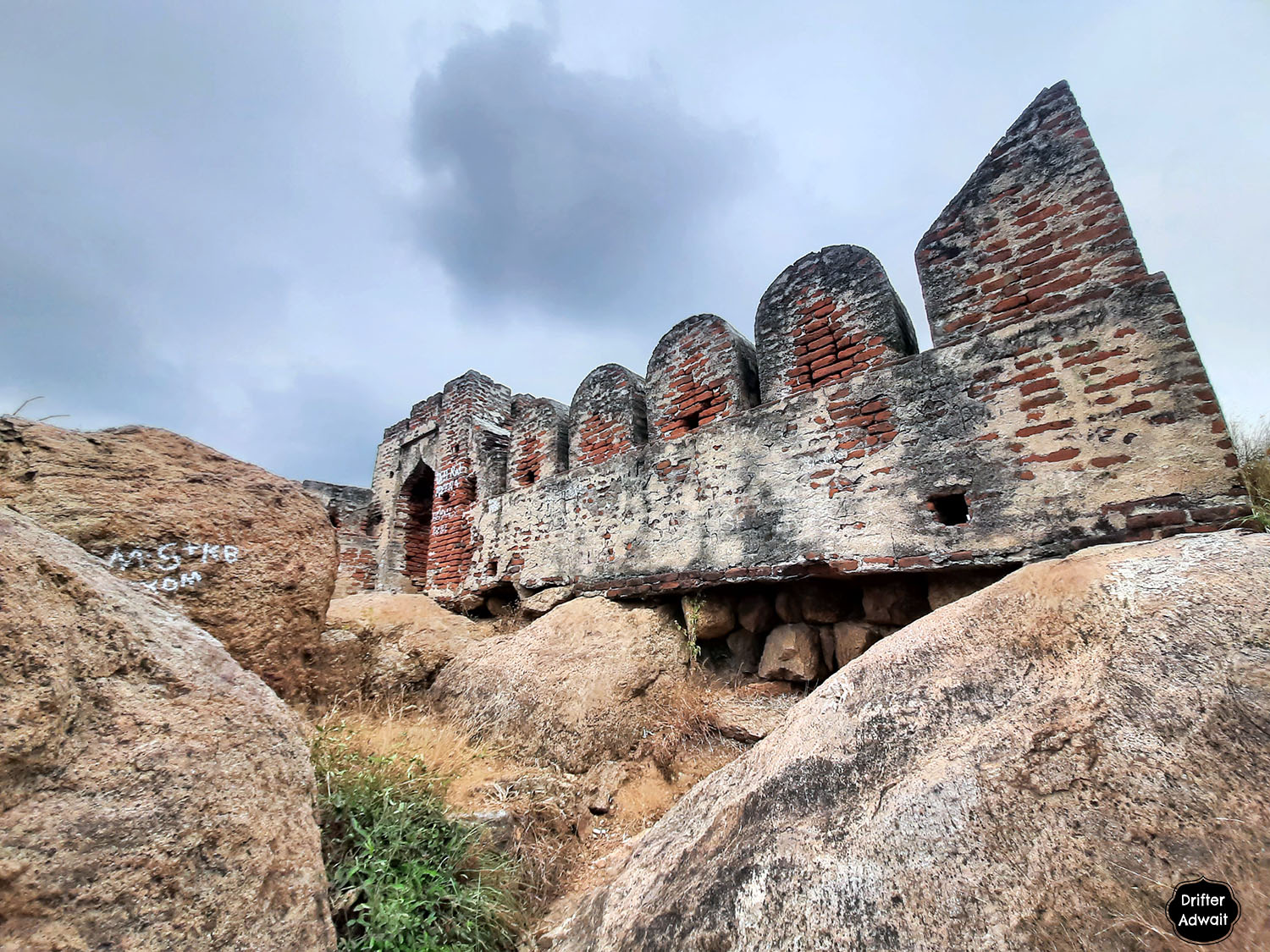

Very well written.
Thank you sir.
छान, माहिती. सुंदर शैली.
Thanks Pramod Ji, thank you for taking your time to read and comment.